
No Man’s Sky
The game is finally out, so what do I think of it?
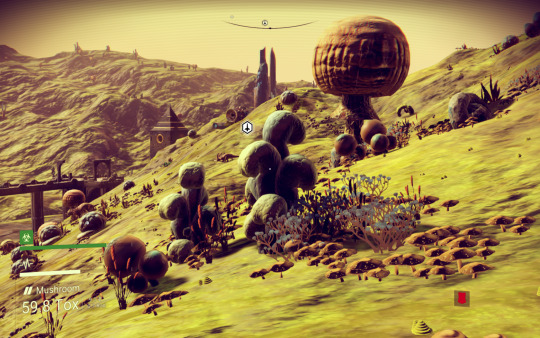
Unfortunately, I haven’t settled on an easy answer yet.
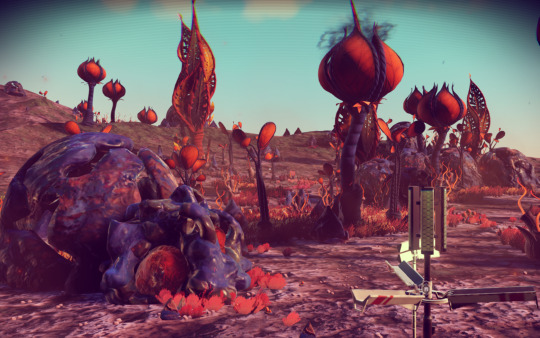
This is partially because the game is really big. Maybe too big. I’ve barely scratched the surface (I’ve yet to find my first Atlas pass) and I’ve seen some crazy different planets…and some gameplay features that are the same across every planet. Will they vary more as I get deeper into the game? I can’t say yet. But I’m pretty sure that some of it won’t change.

For example, while the possible planetary biomes are quite varied, each planet is limited to a single biome. This was a deliberate design decision. The intent is that you’ll keep exploring:
“And we’ve built this whole huge universe, and that would be a shame! We want them to go out and explore. Or, for instance, each planet could contain loads of different biomes within it, we could have polar ice caps, and all that kind of thing, but then it wouldn’t make you want to go and visit other planets. So we don’t have that, and that’s really purposeful, and that’s our kind of vision for the game.”
I have to respect that, even if I’m not sure I agree with it.
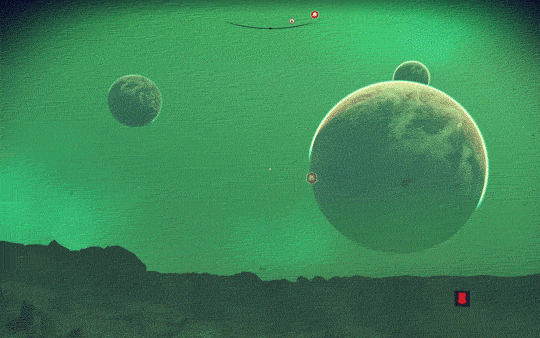
Every planet I’ve found so far has had something unique about it. From my first, acid-rain-and-mushroom planet, to a snow world with red cliffs, to a planet where vast tables of rock float above an alien jungle, the visual variety has kept up.
This is a game that wants you to keep moving and seeing new things. The game is oriented around going forward. There’s a few features, like the bonus for analyzing 100% of the creatures on a planet, that act as friction on that.
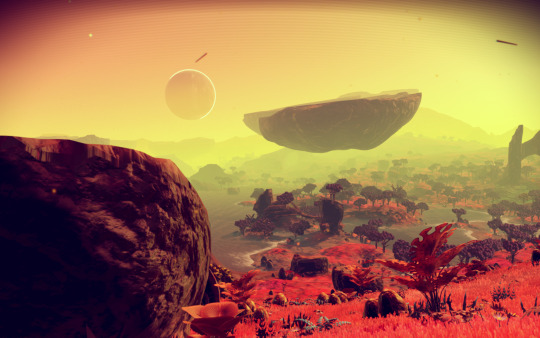
Sure, some of the planets do feel a bit similar. A lot similar in the case of the more barren worlds. It’s much more pleasant to stroll through a lush paradise instead of scrabbling across empty rock gullys.
And, at least so far, the buildings and other places you visit are often visually identical. They’re certainly functionally identical, in that the points of interest fall into a few general categories and I’ve yet to find a huge emergent contrast that doesn’t derive from the planet’s security/conditions/wildlife settings.
I’ve also yet to encounter any vast plains or forbidding mountains. While there’s been a lot of variety so far, it has had some limits. Most places I’ve seen haven’t pushed the extremes as far as the generator is almost certainly capable of doing.
Though the planet with giant cubes of rock looming above snow-covered valleys was definitely memorable.

And I’m going to have to go back and find it again if I want any pictures, because my screenshots from that session didn’t get saved and who knows when I’ll see a planet like that again.
(The game is definitely big. You’d think that a Douglas Adams quote would get the scale across, but that’s just peanuts to the math. Math can get really big. And procedural generation is one of the ways we have to sensorily experience mathematics.)
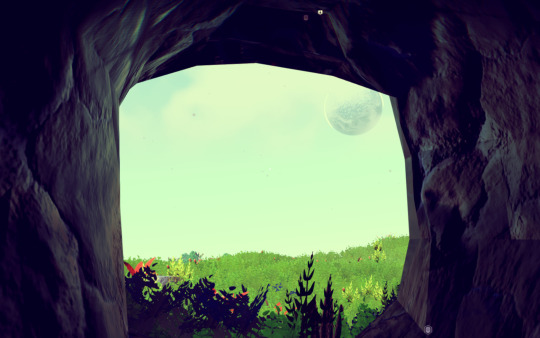
I have a lot more to say about No Man’s Sky, later. Good and bad. I expected that it would be instructive, and it definitely lived up to my expectations on that count.
What I can say today is that it is not the pinnacle of procedural generation. It’s an example that’s going to be referenced repeatedly, especially if Hello Games continues to support and update it. But, inevitably, there is also a vast amount of things that it’s not doing.
Sometimes that’s a deliberate design choice, like with the single-biome planets. Sometimes that’s because its focus is elsewhere–there’s no procedural plot generation, for example. (You’ll have to wait until November for the state of the art on that.) It doesn’t procedurally generate new gameplay. (You’ll want ANGELINA for that.) And sometimes No Man’s Sky tries but the implementation fails to live up to the rest of the game.
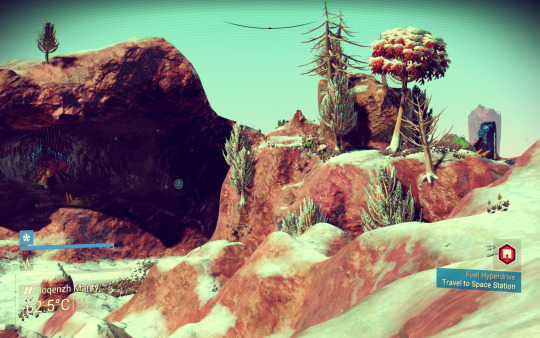
Still, I’m glad it got made. I think it closes out an era of discussing if an accessible, modern universe-exploration sim can be made and marks a transition to the dialogue about how best to make one.
I can live with Noctislikes becoming a genre.
